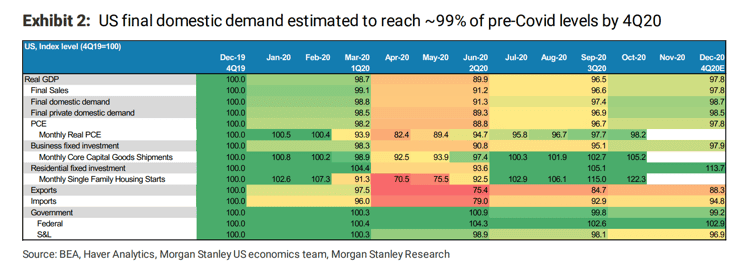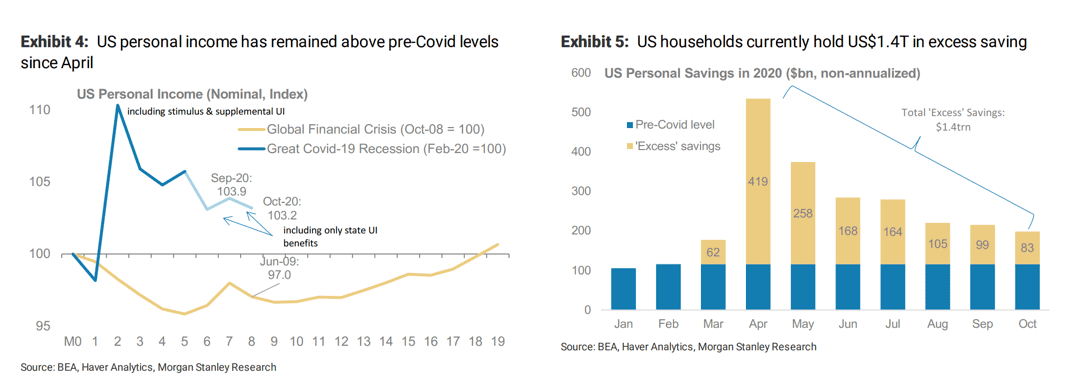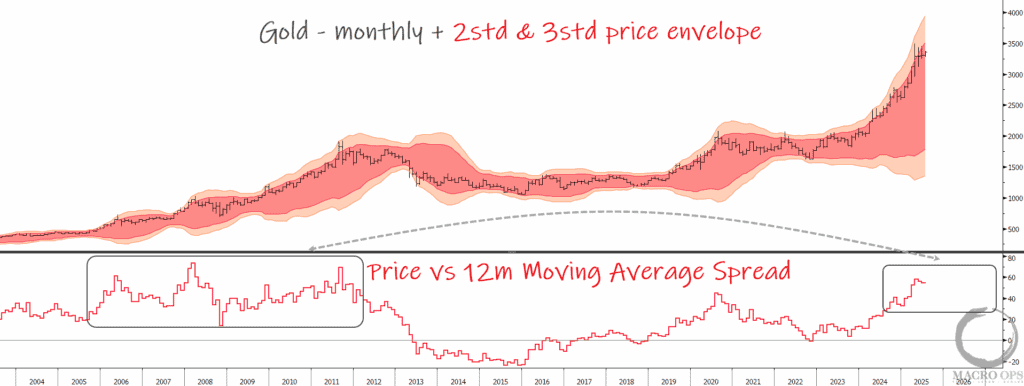“There are decades where nothing happens… there are weeks where decades happen… and then there’s 2020 where just a bunch of sh*t goes cray-cray” ~ Vladimir Ilyich Lenin
Gotta hand it to Lenin. You may not agree with his politics but the man had some foresight when commenting over a century ago on the monetary and fiscal changes we’d see this year.
Market participants are playing a different game today than just 12-months ago. A very different game. The Game Masters — our anointed monetary and fiscal policymakers — have changed the rules.
When you’re playing a game and trying to win it helps to know what the rules are.
So what are these changes then?
Well, the most obvious one that everyone already kinda knows but certainly doesn’t fully appreciate yet is the Fed’s new reaction function.
There’s been a paradigm shift in monetary policy. Shoot, there’s been paradigm shifts amongst our fiscal policymakers too, but we’ll get to that in a follow-up note… The Fed has long carried out its dual mandate of keeping unemployment low and prices stable (inflation at 2%) by running a countercyclical monetary policy, referred to in economic parlance as “leaning against the wind.”
This is the Fed policy we’ve all come to know and love *sarcasm*. When the Fed perceives economic activity to be waning, it attempts to boost output by lowering interest rates thus easing financial conditions, giving a boost to risk-taking (CAPEX, investment, Ponzi scheming, etc…). Conversely, when they discern unemployment to be at a level that could lead to higher inflation (Phillips Curve nonsense), they move to tighten conditions else we get a 70’s inflationary replay…. MO readers are smart so no need to really go over this stuff.
Anyways… the difference now is that the Fed has changed its reaction function. They are no longer running countercyclical policy. Instead of leaning against the wind, they’re running full-bore with it. And they have no plans to change their new tune for the foreseeable future.
It’s here’s where there still seems to be a big misperception about Fed policy. The market knows that the Fed is staying uber dovish due to the COVID shock and all that. But what most still fail to grok is that this new reaction function is here to stay.
The Fed started a major review of its policy approach last year. They smartly realized that their mechanical approach to mon-pol wasn’t working. And hadn’t been working for some time.
They released their findings from this review in September. You can find the statement here. It’s an important document as it clearly states the Fed’s radical shift and how they’ll be conducting business going forward. Actually, here’s a document that shows the specific changes made to their modus operandi.
The key takeaway is that the Fed will no longer be mechanistic. They’re not going to make mon-pol decisions based on employment levels relative to NAIRU because they finally accept that the Phillips Curve is dead (don’t mourn for Phillip though, I don’t think he ever existed).
As a result, they’re not going to try and front-run inflation. Instead, they’re going to practice flexible average inflation targeting (FAIT). Which is just a way of them saying:
“Hey guys… so we’ve been kinda undershooting our inflation target for two decades. As a result, we’ve kinda-sorta been creating unnecessarily high unemployment and plenty of human suffering… So, you know, we’re gonna let inflation run above target for a while. Probably a good while too before we even think of letting our foot off the gas.”
This is massive… the Fed has long been the governor on speculation, keeping the economy and thus the market, from running too hot.
Their long-standing counter-cyclical policy is why the GOAT Druckenmiller has said “the best environments for stocks is a very dull, slow economy that the Federal Reserve is trying to get going” because he knew that “once an economy reaches a certain level of acceleration… the Fed is no longer with you.”
This is no longer the case. The Fed now wants to reflate the economy… It’s with you… It wants to run inflation above target. It wants to see how low it can drive unemployment.
If you’d like to better understand their reasoning and conviction behind this change, give this speech by Brainard a read… essentially, they found during their frequent Fed Listens sessions over the last 2-years, just how devastating structurally high unemployment has been for many Americans. They’ve resolved to no longer be the cause of that.
This is a critically important paradigm shift. The market is only beginning to wake up to this fact. But, I don’t believe this monumental change will hit home until people see the Fed stand fast while the economy runs hot. People are skeptical and rightfully so. But they won’t be for much longer…
That’s because in the second half of 2021 we’re going to get to see if the Fed is more bluster than bite. At MO we believe the US, and the global economy as a whole, are going to kick into high gear sometime around summer (obviously barring the mandatory caveats vis a vis a failure with the vaccines, a dangerous untreatable mutation of the virus, crab people crawling up from their underground lair, etc…).
Our estimates for both growth and inflation are well above consensus. This is primarily due to the big rebound in domestic demand as well as the significant repair to household balance sheets, not to mention the 2nd CARES Act that will be goosing things even further.
The Fed’s new reaction function, it’s willingness to lean into reflation versus against it, is a key part of our initial conditions going into 2021. How this condition evolves (whether Powell blinks or not when CPI shoots above the magic number 2) will be a large determinant to how the second half of 2021 plays out, as well as the years that follow.
Understanding the importance of this shift should be a big part of your playbook going into next year.
What are the obvious secondary and tertiary impacts of this Fed shift? A much lower USD perhaps? Easier financial conditions for longer sounds about right… So maybe greater risk-taking (already seeing some of that).
Perhaps a reversal in flows from the highly concentrated US to the rest-of-the-world as the global economy rebounds? That sounds about right to me… so maybe you want some precious metals and definitely some emerging market exposure.
How about looking where there’s been serial under-investment over the last decade that has led to tight supply. A tight supply which is going to run into booming demand in just a few quarter’s time. There’s clearly some commodity plays for that… plenty of asymmetry around if you know where to look.
Anyways, this is just a thought exercise we’re running through this week. This is our understanding initial conditions so we don’t make predictions process. Everything will make more sense by the end of the week after we cover our new fiscal rules and the structurally compressing risk-premia regime we’re now in.
Oh, and before I sign off. I and the MO team want to wish you all a safe and happy New Years as well as give you a big cheers to making 2021 a much better year!
See you tomorrow…
Your FAIT Operator,
Alex










